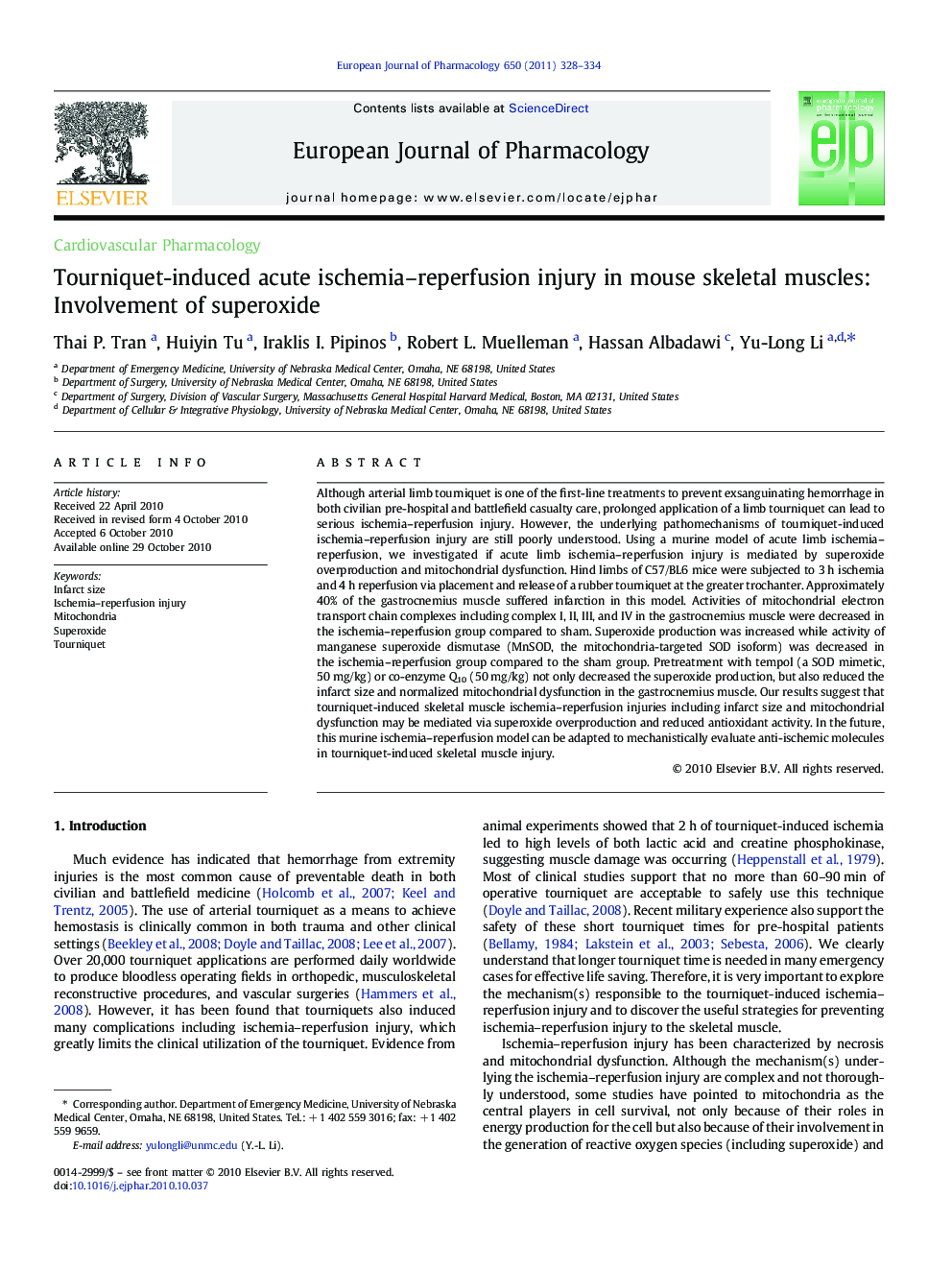| کد مقاله | کد نشریه | سال انتشار | مقاله انگلیسی | نسخه تمام متن |
|---|---|---|---|---|
| 2533228 | 1559041 | 2011 | 7 صفحه PDF | دانلود رایگان |

Although arterial limb tourniquet is one of the first-line treatments to prevent exsanguinating hemorrhage in both civilian pre-hospital and battlefield casualty care, prolonged application of a limb tourniquet can lead to serious ischemia–reperfusion injury. However, the underlying pathomechanisms of tourniquet-induced ischemia–reperfusion injury are still poorly understood. Using a murine model of acute limb ischemia–reperfusion, we investigated if acute limb ischemia–reperfusion injury is mediated by superoxide overproduction and mitochondrial dysfunction. Hind limbs of C57/BL6 mice were subjected to 3 h ischemia and 4 h reperfusion via placement and release of a rubber tourniquet at the greater trochanter. Approximately 40% of the gastrocnemius muscle suffered infarction in this model. Activities of mitochondrial electron transport chain complexes including complex I, II, III, and IV in the gastrocnemius muscle were decreased in the ischemia–reperfusion group compared to sham. Superoxide production was increased while activity of manganese superoxide dismutase (MnSOD, the mitochondria-targeted SOD isoform) was decreased in the ischemia–reperfusion group compared to the sham group. Pretreatment with tempol (a SOD mimetic, 50 mg/kg) or co-enzyme Q10 (50 mg/kg) not only decreased the superoxide production, but also reduced the infarct size and normalized mitochondrial dysfunction in the gastrocnemius muscle. Our results suggest that tourniquet-induced skeletal muscle ischemia–reperfusion injuries including infarct size and mitochondrial dysfunction may be mediated via superoxide overproduction and reduced antioxidant activity. In the future, this murine ischemia–reperfusion model can be adapted to mechanistically evaluate anti-ischemic molecules in tourniquet-induced skeletal muscle injury.
Journal: European Journal of Pharmacology - Volume 650, Issue 1, 10 January 2011, Pages 328–334